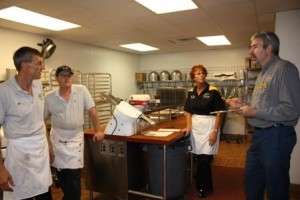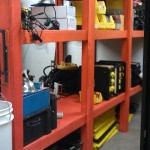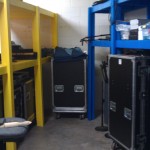By Megan Johnson, Student Process Improvement Coordinator
Lean is a method of continuous improvement that strives for perfection by eliminating waste and creating more value for the customer. Therefore, it is only logical that Lean thinking can go hand-in-hand with “green” thinking!
There are many different examples of how Lean principles and tools could be used to reduce waste in an environmentally-friendly way.
A few ways that Lean thinking could be used to reduce waste and benefit the environment at the same time include:
- Reducing the amount of paperwork required in a process so that the papers used are only value-added and no unnecessary or duplicated work is occurring,
- Removing non-value added steps in a process so that less energy needs to be used to create the final product,
- Using by-products or leftovers of a process to make another useful product, and
- Using minimal packaging for a product.
Do you have a process that you could make more “green” using Lean methodology?




